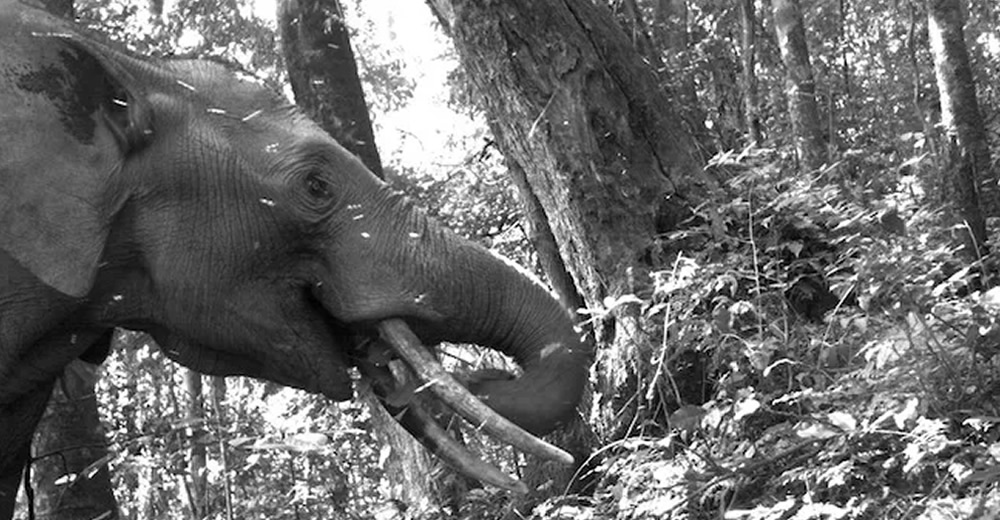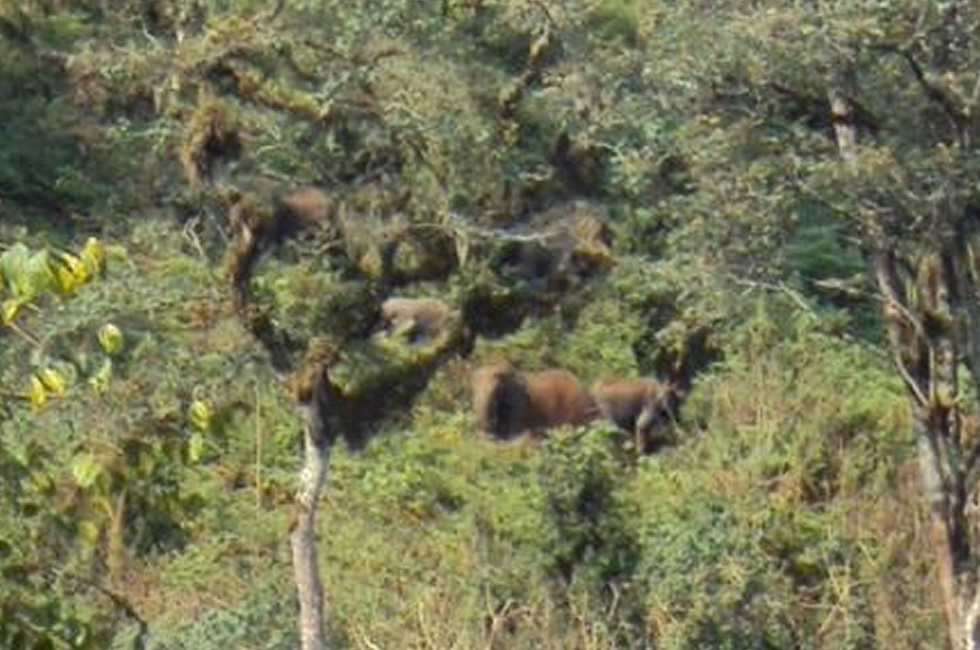Elephants in Bwindi
Elephants in the gorilla highlands can be of two species; the forest elephant and the savannah elephant. The main differences are the numbers of nails on their feet, the shape of their ears and the tusks. The forest elephant has straighter tucks and was therefore preferred by ivory craftsmen. Both forest and savannah elephants range overlap and there may be inter breeding. The elephants in Bwindi are originally from the savannah further north but got stuck in the park and adapted to it. The current statistics are a little vague with the estimates of 30-50, roughly the same as eight years ago.

These elephants are slow breeders, with only one infant every five years. The female is receptive for 3- 6 days at a time and advertises it with a low growl that can be heard for several kilometres. The gestation period takes two years.
These utilize 78 plant species in Bwindi but concentrate on nine principal food types. Their overall diet is made up of 62% of trees, 12% bushes and 25% herbs, climbers, grasses and sedges: fruit is rare. They focus on bark in the dry season and bamboo in the wet. These feed on bamboo shoots at high altitudes during the wet season and then move to Mubwindi swamp in the dry and forage around mature forests.
The effect of elephants on trees is divided into bark stripping and damage by toppling and breaking. More trees are stripped in the bamboo zone while more are broken in mixed forest; they tend to cause more tree damage at the forest’s edge and near rivers and other permanent water sources. The elephants increase forests stress but scatter seeds, maintain structure and prevent bush encroachment.
The pygmy elephant has been widely reported in Congo and South western Uganda but little studied. It is also thought to be a morph of the forest species. Its smaller size may be an adaptation to either dense forest or high altitudes at the periphery of its range.
Elephant Sighting in Bwindi National Park

